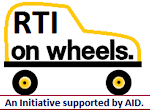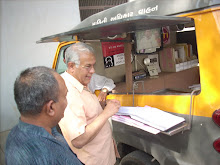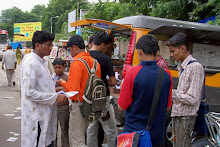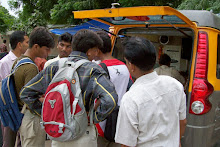The Logical Indian: Jaipur:
Tuesday, 01 September 2020.
The
information publicly available on the Jan Soochna Portal is to make it easier
for citizens to access records and conduct social audits, according to the
authorities related to the creation of the portal.
On a
similar line to the Right to Information (RTI) movement, the Rajasthan state
government in September 2019 launched the Jan Soochna, a single-window portal
hosting information and data on different schemes carried out by several
departments.
The
Department of Information Technology and Communication (DoIT&C)
collaborated with the civil society members to create the portal.
Under Section
4 (2) of the Right to Information Act 2005, provisions were made that different
authorities and government departments will voluntarily disclose information
through various means which included the internet that would cut down on the
number of applications filed by people seeking various information.
However,
for a considerable period of time, neither the central nor the state
governments had taken steps towards implementing the provisions of this
section.
"We
realised that the government is gathering a lot of information and hiding them
behind admin laws. We wanted to build a janta information system where reports
are generated useful to people. Governance has to be a joint effort,"
activist Nikhil Dey from the Soochna Evam Rozgar Abhiyan and Mazdoor Kisan
Shakti Sangathan (MKSS) who consulted and collaborated with (DoIT&C)
officials on the various features of the portal told The Indian Express.
The
state government's portal which was then set up with an aim to increase
transparency and accountability has 82 different information request options
for 32 schemes across 13 departments. Besides explaining the schemes, it also
provides real-time information on beneficiaries, authorities in charge,
progress, etc.
Another
important aspect behind the creation of the portal has been initiating the
digital dialogues between the citizens and the government to transform the mode
of communication digitally thereby facilitating transparency.
"We
told the government that whatever information you have you give it to the
public without any hindrance. We also asked them to organise it in a way so
that it is useful for people. This initiative converts a culture of secrecy
into a culture of openness," Dey added.
"Through
our discussions with citizens and activists, we developed this portal to share
whatever real-time, individual-level data are needed by the common man, to reduce
corruption and to increase transparency of governance," R.K Sharma, an
additional director who oversees the project told The Hindu.
The
portal provides information on several departments including information on
MGNREGA workers, development works under the Panchayati Raj, health and family
welfare department, administrative reforms, information on ration cardholders
as well as other welfare schemes specifically aimed at farmers, construction
workers, miners and students.
The
portal also helped in removing the middlemen or the unwarranted beneficiaries
during the process. For instance, one can access the land records and documents
from the portal that were earlier obtained from the patwaris.
The
details which escaped the public attention which could be as minute as the
consumption of rations from each family in a ward has now become trackable. The
portal displays the entries for withdrawals made by each ration card owner from
the public distribution system. This data includes the kind of food
grain/kerosene/sugar that was withdrawn, including the quantity.
Since
its launch, the portal has garnered praises from people coming from all walks
of life, however, there has been an interesting observation regarding the
silence from the privacy activists on the data being collected by the Rajasthan
government and put forth for public scrutiny.
The
Scroll reported that the privacy activists opposed the Aadhaar programme on the
grounds that it was an assault on the fundamental right to privacy have been
quiet on the mechanism of Jan Soochna portal.
While
the Aadhaar programme collected sensitive personal information including
fingerprints, iris scans and personal details ranging from names to addresses,
it was designed in a way that such information was never published in the
public domain.
The
point of contention in both the cases have been that Aadhaar not only included
unauthorised access to the data but the information collected through it was
never proactively published.
The
authorities associated with the matter have been of the opinion that the
information publicly available on the Jan Soochna Portal is to make it easier
for citizens to access records and conduct social audits. The idea is that if
all of the information is made publicly available it will help communities to
root out "ghost payments" and siphoning of funds by public officials.
In
another report the publication also pointed out that relevant sections of
Section 8 (1)(j) of the Right to Information Act and Article 19 (2) of the
Constitution claims that not all personal information is private.
It
stated that disclosing personal information from public records that does not
violate decency or morality is as per the Constitution and the RTI Act and
should not be considered as a violation of an individual's privacy rights.














































































